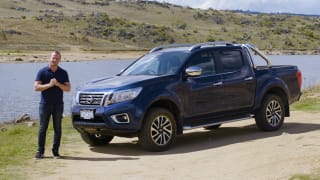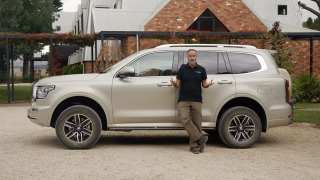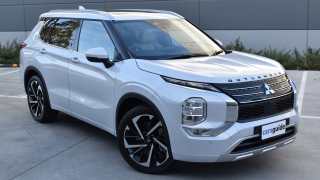The 4x2 Steed, like its 4x4 stablemate, is available only as a dual-cab ute, but it does offer a choice of 2.0-litre, four-cylinder diesel (the only engine offered in the 4x4), or with a 2.4-litre, four-cylinder petrol engine. Our test vehicle was equipped with the petrol engine, which is only available with a five-speed manual (the diesel version comes with a six-speed manual).
At $25,990, the rear-wheel-drive Steed offers a considerable saving over the cheapest petrol model in Toyota’s HiLux range; the Workmate dual-cab ute with a 2.7-litre petrol engine and five-speed manual ($30,690). However, the savings are much less when measured against Nissan’s Navara equivalent, which, in entry-level DX form and with a 2.5-litre petrol engine and six-speed manual, costs $26,490.

What the Steed’s Japanese rivals lack in standard features is balanced somewhat by their need for regular unleaded (the Steed needs premium), and the fact they both have superior power and torque figures, which are important considerations for these work-focused vehicles.
The Steed’s standard equipment list is one of its strong points, as all variants - no matter which engine or drivetrain you choose - come loaded with the same serving of eye candy and creature comforts that can only be dreamt of in Japanese rivals at this price.
Chrome body highlights include grille, roof racks, door handles and side body protection mouldings. Plus there’s a classy-looking stainless steel sports bar and door scuff plates, plus full-length side steps, a cargo bed liner and 16-inch alloy wheels with 235/70R16 tyres and a full-size spare.

The cabin’s fully carpeted and leather-appointed trim includes cowhide on the steering wheel and gear-knob. The driver gets a six-way adjustable powered driver’s seat, and both front seats are heated. There’s also electric-folding door mirrors with demisters and indicators, a six-speaker sound system with touchscreen controls and Bluetooth, and an excellent tyre-pressure monitoring system to name a few.
Options include a tow bar, tonneau cover and sat-nav with reversing camera. We might sound greedy, but the rear-view camera should be standard, too.
















